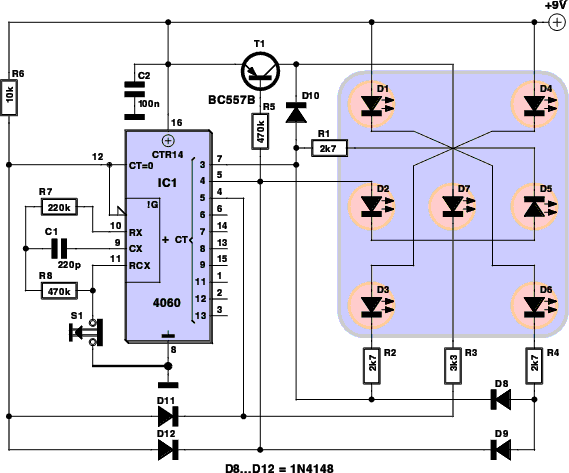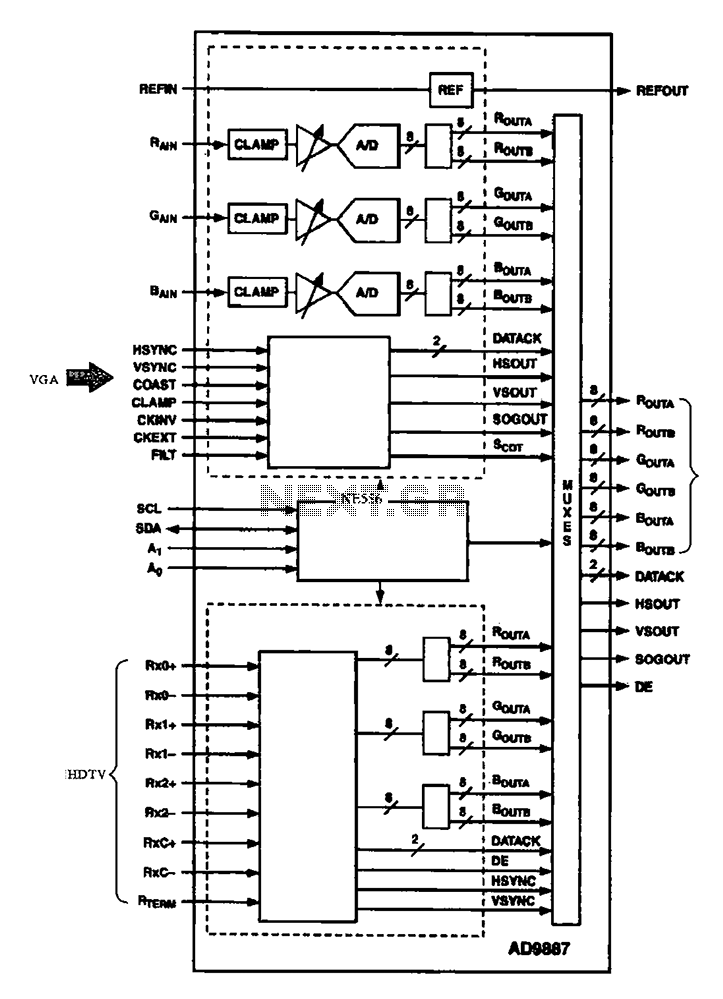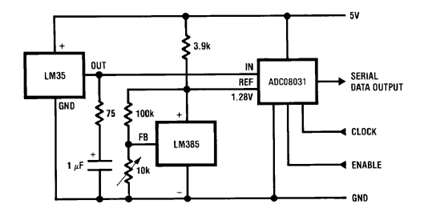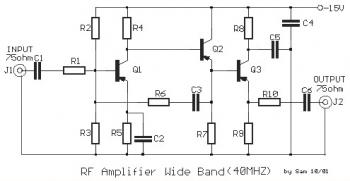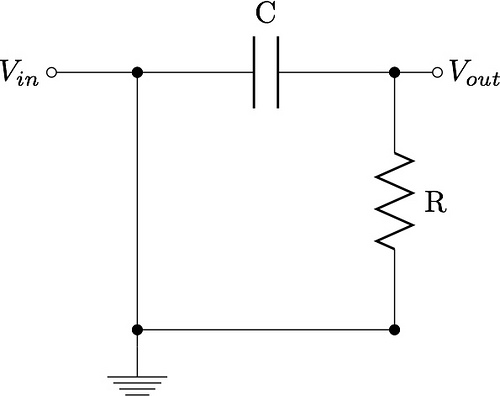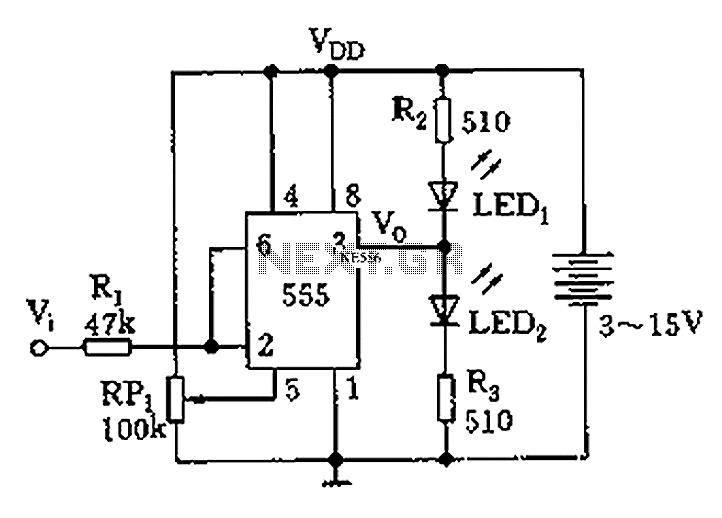
Power failure emergency lights automatically converter circuit diagram
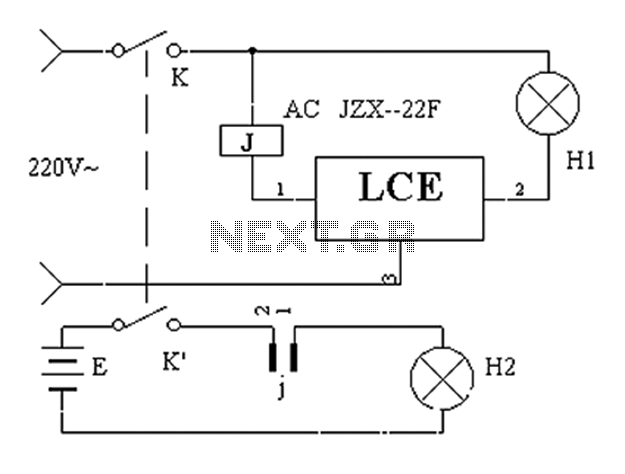
The application circuit operates the device as illustrated below, allowing for intermittent lighting in specific situations (e.g., during surgery). It utilizes an LCE module for blackout emergency lighting, which activates automatically after a power failure, ensuring uninterrupted illumination. In this context, H1 represents the normal lighting equipment, while H2 denotes the lighting activated by emergency power.
The described application circuit is designed to provide reliable lighting solutions in critical environments where continuous illumination is essential. The circuit incorporates an LCE (Lighting Control Equipment) module that serves as the core component for managing the transition between normal and emergency lighting modes.
In normal operation, when the main power supply is active, H1 (normal lighting equipment) operates as intended, providing adequate illumination for various tasks. The LCE module continuously monitors the power supply status. Upon detecting a power failure, the module initiates a switch to H2 (emergency lighting) mode. This transition is seamless, ensuring that there is no perceptible interruption in lighting for users, which is particularly vital in sensitive situations such as surgical procedures.
The circuit design typically includes a power source, a relay or a solid-state switch for toggling between H1 and H2, and appropriate control circuitry that manages the LCE module's response to power fluctuations. The emergency lighting system can be powered by a backup battery or an alternative power source, ensuring that H2 is reliably activated during outages.
In addition, the circuit may feature indicators or alarms to notify users of power status, ensuring that personnel are aware of any changes in lighting conditions. This design is crucial for maintaining safety and operational efficiency in environments where lighting is critical, such as hospitals, laboratories, and emergency response facilities. The overall configuration ensures that the system meets regulatory standards for emergency lighting, thereby enhancing the safety and functionality of the application.Application circuit works the device as shown below, a number of special occasions allowed intermittent lighting (eg doing surgery, etc.), making use of LCE module blackout eme rgency lighting converter automatically after a power failure lighting can be achieved without interruption effect. Wherein H1 is the norm lighting equipment; H2 is lighting when emergency power.
The described application circuit is designed to provide reliable lighting solutions in critical environments where continuous illumination is essential. The circuit incorporates an LCE (Lighting Control Equipment) module that serves as the core component for managing the transition between normal and emergency lighting modes.
In normal operation, when the main power supply is active, H1 (normal lighting equipment) operates as intended, providing adequate illumination for various tasks. The LCE module continuously monitors the power supply status. Upon detecting a power failure, the module initiates a switch to H2 (emergency lighting) mode. This transition is seamless, ensuring that there is no perceptible interruption in lighting for users, which is particularly vital in sensitive situations such as surgical procedures.
The circuit design typically includes a power source, a relay or a solid-state switch for toggling between H1 and H2, and appropriate control circuitry that manages the LCE module's response to power fluctuations. The emergency lighting system can be powered by a backup battery or an alternative power source, ensuring that H2 is reliably activated during outages.
In addition, the circuit may feature indicators or alarms to notify users of power status, ensuring that personnel are aware of any changes in lighting conditions. This design is crucial for maintaining safety and operational efficiency in environments where lighting is critical, such as hospitals, laboratories, and emergency response facilities. The overall configuration ensures that the system meets regulatory standards for emergency lighting, thereby enhancing the safety and functionality of the application.Application circuit works the device as shown below, a number of special occasions allowed intermittent lighting (eg doing surgery, etc.), making use of LCE module blackout eme rgency lighting converter automatically after a power failure lighting can be achieved without interruption effect. Wherein H1 is the norm lighting equipment; H2 is lighting when emergency power.
